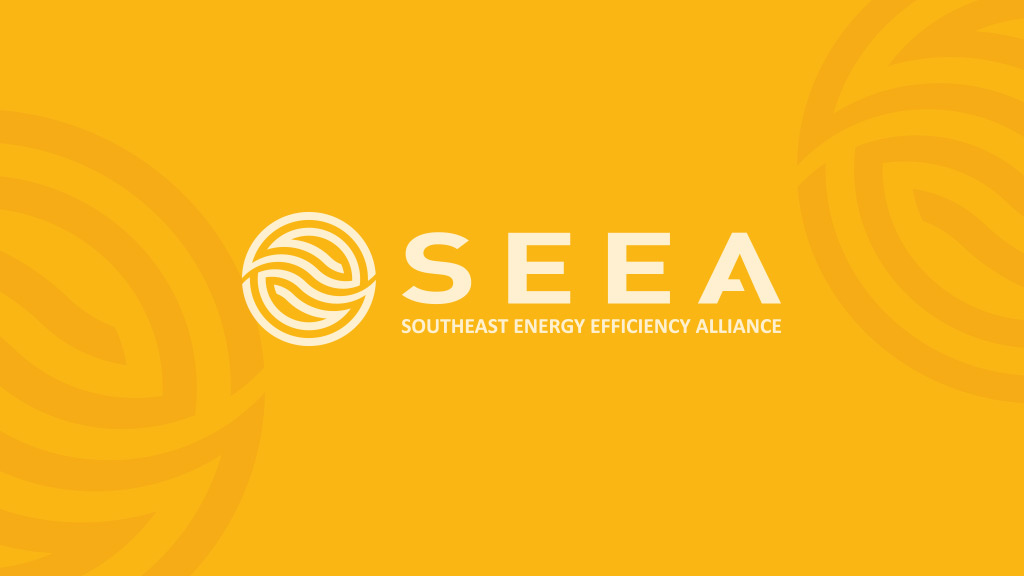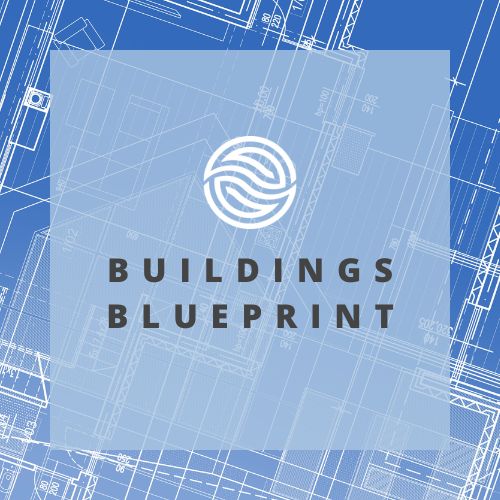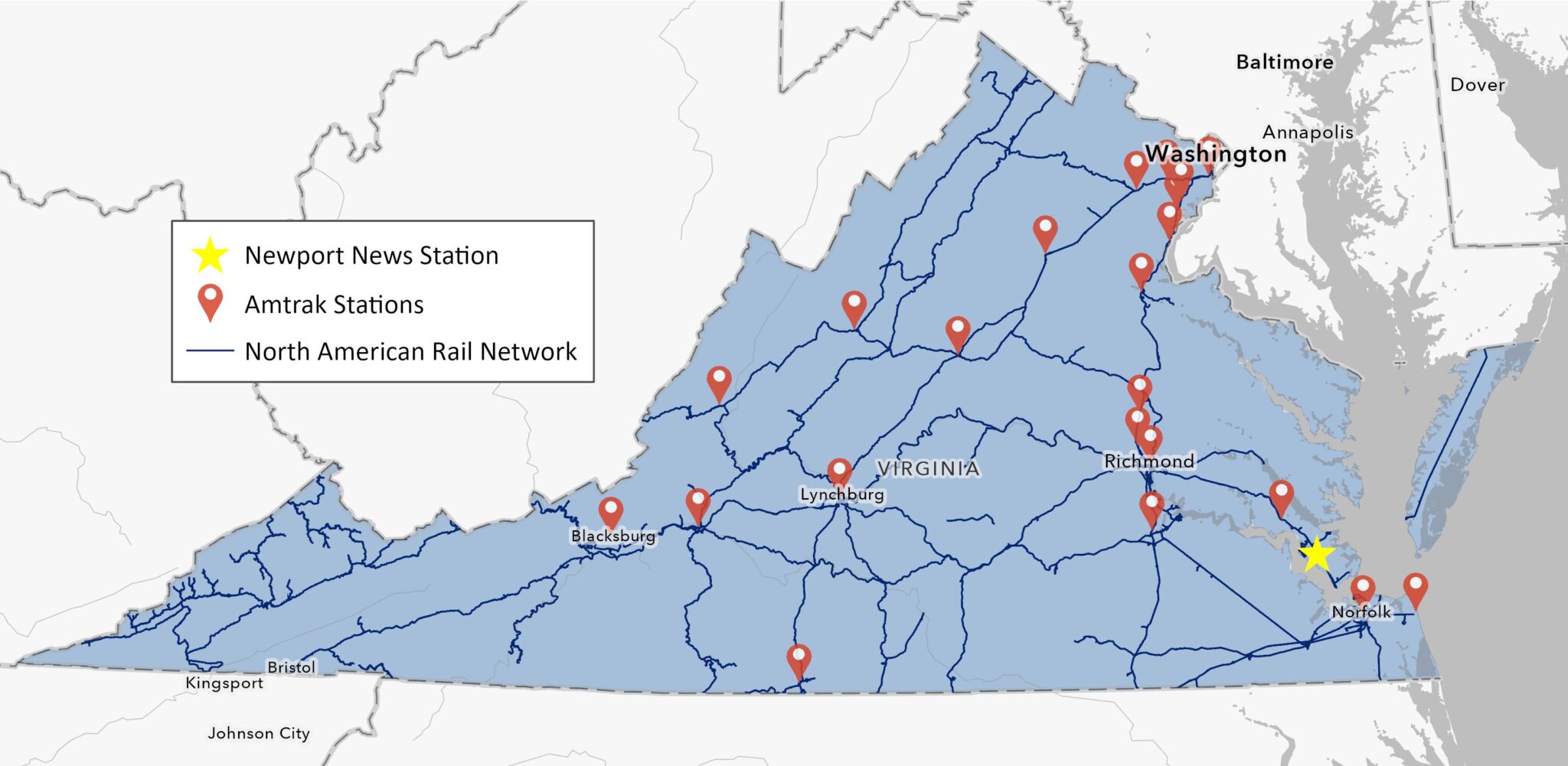Month: July 2025
Advancing Energy Affordability in the South: Reflecting on SEEA’s Annual Member Meeting
By Will Bryan
Earlier this year, the news broke that Atlanta is “dead last” in economic mobility. This wasn’t entirely new news. In 2014 Atlanta ranked forty-ninth out of the nation’s top fifty metro areas for economic mobility, according to researchers at Harvard University. By analyzing tax returns over time, the study’s authors found Atlantans faced steep barriers to economic mobility. While a child born in Atlanta in 1978 would be slightly better off by the age of 27 than a child born in 1992, neither had a high likelihood of improving their economic condition. But when that 2014 study was updated this year Atlanta dropped to last place.
Georgians received a double-whammy last month in a new CNBC study, which ranks Georgia as the tenth best state in the country to do business but the worst state in the nation for quality of life, with several other Southern states rounding out the bottom of that list. These reports underscore that the realities of life for many people in our region are deeply challenging, with few opportunities to thrive and move ahead.
Using these insights as the starting point, SEEA’s annual member meeting explored why issues like economic mobility should matter to energy efficiency practitioners and how our work makes a vital contribution to addressing these issues, particularly at a time when energy affordability is of increasing concern of households throughout the nation.
As SEEA’s work has indicated, energy affordability is a central concern for millions of people in the South. Our region experiences outsized rates of energy insecurity and affordability challenges, which disproportionately affect low-income households. These families often lack the financial resources to invest in efficiency solutions, trapping them in a cycle of high bills and uncomfortable – even unhealthy – living conditions. This can contribute to a lack of economic mobility, and worse. According to recent research, energy burdened households have a 150-200% greater risk of falling into, or staying trapped in, economic poverty.
Over the course of two days, SEEA members engaged in a dynamic program focused on key causes and solutions to such widespread struggles with energy affordability. The member meeting highlighted bright spots: programs that address energy insecurity, cutting-edge research insights that can guide programs and policies, and other innovations that are positioning the South as a leader in developing impactful solutions to energy affordability challenges. We also heard compelling evidence of how efforts to enhance energy affordability contribute meaningfully to solving other pressing issues, including improving public health outcomes, enhancing community resiliency, reducing peak demand, and yes, improving economic mobility.
Our members rounded out the meeting by experiencing firsthand how efficiency efforts are helping to improve economic mobility in Jacksonville. Thanks to JEA, we traveled to the eastside to learn about the incredible work happening through LIFT JAX – a nonprofit focused on eradicating generational poverty – alongside partners like JEA. We toured Debs Store, a historic business that has been completed retrofitted to serve as a grocery store, bank, and community hub for energy efficiency education and other essential services. This unique program model, which integrates energy solutions with wider community support and development, is one of the most innovative in the region.
Energy affordability has long been a core concern for SEEA, and our work provides our members with invaluable guidance on the critical context, effective policies, and essential program needs to improve affordability throughout the South. Our research not only outlines the pervasive nature of energy insecurity but also delivers actionable data for utilities, local decision-makers, and community-based organizations. This data empowers them to secure transformational investments, design and implement effective programs, and advance community development initiatives that can support entire neighborhoods. By connecting energy efficiency to critical issues like economic mobility, we also tell compelling stories about why this work matters and expand the set of stakeholders who are engaged in advancing energy efficiency.
We’ve seen it time and again in our work: investments in housing are, at their core, investments in energy infrastructure. By enhancing energy efficiency, we do more than just lighten the load on burdened households – both financially and in terms of health. We directly contribute to the “triple bottom line,” delivering benefits for people, the planet, and fostering prosperity. This strategy is vital for managing future energy growth, building a truly resilient system, and ultimately, ensuring a better future for everyone in the South.
We can only succeed in this work alongside great partners. We encourage you to reach out or explore our work to understand these critical issues and to see how we can work together on solutions.
Buildings Blueprint – 2nd Quarter
April – June 2025
Welcome to SEEA’s Buildings Blueprint, where we share updates and resources on energy codes and the built environment across the Southeast and U.S. Island territories.
Leadership Update at SEEA
We’re thrilled to welcome John Silkey as the new Executive Director of the Southeast Energy Efficiency Alliance, beginning July 7!
John brings more than a decade of experience in clean energy, sustainability, and organizational leadership, including past service as Chair of SEEA’s Board. His deep understanding of the region’s energy landscape and commitment to community-centered solutions make him a strong and visionary leader for SEEA’s next chapter. Welcome, John!
Read more in the press release below.
SEEA is Hiring: Senior Program Manager – Efficient Buildings
SEEA is seeking a passionate and experienced Senior Program Manager to lead clean energy initiatives across the Southeast. This role helps shape a more energy-efficient built environment by managing impactful programs, guiding cross-functional teams, and collaborating with stakeholders to advance equitable energy solutions.
Resources
Shape the Future of Energy Workforce Training!
SEEA is partnering with NREL on a national survey to better understand hiring and training in the residential energy workforce. Your feedback will help identify real challenges and opportunities, shaping strategies that will strengthen our industry!
The 10-minute survey is open to contractors and professionals working on residential energy performance improvements, including single-family homes, manufactured housing, and multifamily buildings. Your input can drive change!
Click below to complete the survey:
Regional News
Atlanta’s Cool New Cool Roof Rule
The City of Atlanta has adopted a new policy requiring all new and replacement roofs (both residential and commercial) to use “cool roof” materials, such as light-colored or reflective surfaces designed to reflect more sunlight and absorb less heat than traditional roofing. According to Grist, this shift is projected to lower average summer temperatures by 2.4°F citywide, and up to 6.3°F in the city’s hottest neighborhoods. Over time, the policy could result in $310 million in energy savings over the next 35 years.
Cool roofs are a simple yet high-impact solution that reduces heat absorption, lowers indoor temperatures and cooling needs, and improves overall thermal comfort – especially important in the Southeast, where extreme heat is already a public health concern. By integrating this requirement into its building code, Atlanta is taking a step towards advancing a vision for a resilient, energy-efficient future, while also supporting long-term affordability and high-quality development. To learn more, click the link below.
Building Better in Birmingham: Investing in Homes That Last
The City of Birmingham, in partnership with GROWTH Homes, has launched a $16.6 million initiative to build 52 affordable, energy-efficient homes in Pratt City’s Shadow Brook subdivision, with additional construction planned in the Oak Hill and Woodlawn neighborhoods. These homes will follow high-performance construction practices to reduce energy costs, enhance comfort, and support long-term housing quality.
This effort contributes to Mayor Woodfin’s goal of creating 2,500 new units of affordable housing and includes funding for home repairs and upgrades in existing residences to preserve the local building stock quality. To learn more, click the link below.
Meta’s Mega Data Center Raises Energy Questions in Louisiana
Meta has begun construction on a $10 billion, 4-million-square-foot AI data center in Richland Parish, Louisiana, its largest investment to date. Expected to consume more than twice the electricity used by the city of New Orleans on a peak day, the facility will require major infrastructure support, including three new natural gas power plants proposed by local utility Entergy Louisiana.
While the project is projected to create 5,000 construction jobs and 500 permanent positions, it has sparked debate over long-term costs, grid reliability, and public investment. A new 20-year sales tax exemption for data centers built before 2029 could cost Louisiana tens of millions annually through 2059. To learn more, click the link below.
Powering Up: Alabama Invests in Energy Efficiency Upgrades
Alabama Governor Kay Ivey has awarded nearly $700,000 in grants through the State Energy Program to support energy efficiency upgrades at public and nonprofit facilities across the state. The funding will go toward improvements like LED lighting, HVAC systems, and upgraded wastewater equipment, helping lower energy use and reduce operational costs.
Grant recipients include county offices, municipal utilities, healthcare centers, and the Alabama Shakespeare Festival, with a broad commitment to improving building quality throughout both urban and rural communities. To learn more, click the link below.
All Aboard: Rail Service Returns to Southwest Virginia After Nearly 50 Years
On April 24, 2025, Virginia Governor Glenn Youngkin joined Amtrak and local leaders in Christiansburg, Virginia, to break ground on the New River Valley Rail Project, marking the return of passenger rail service to the region for the first time since 1979. The $264.5 million project includes rail upgrades, a new platform with canopy, parking, and improved signaling infrastructure.
Renovation of Christiansburg’s historic Cambria Station is set to begin in 2027, when Amtrak Virginia will launch two daily roundtrips to Washington, D.C., with stops in Roanoke, Lynchburg, Charlottesville, and beyond. The project is expected to improve regional connectivity, ease congestion along the I-81 corridor, and provide lower-emission travel options. To learn more, click the link below.
What SEEA Staff is Reading
From Headlines to Housing: Folio House Revives a Historic Atlanta Landmark
A historic office building in downtown Atlanta is set to receive a $110 million transformation into Folio House, a mixed-use development led by Gorman & Co. with design by Gensler. Formerly home to the Atlanta Constitution, and later Georgia Power’s Atlanta Division, the building will be thoughtfully restored to include 50 affordable housing units and ground-floor retail, with residences reserved for households earning 30–80% of the area median income. Plans also include shared community space and design elements that honor the building’s historic character with the necessities of contemporary city life.
The upgrades will include lead abatement, structural repairs, and energy-efficient equipment upgrades, breathing new life into an unused structure through a climate- and community-responsive design. Ahead of the 2026 FIFA World Cup, Folio House reflects the city’s broader movement toward reuse over demolition and community-centered development within the existing city landscape. To learn more, click the link below.
Setting the Standard: Alabama Builder Commits to 100% ENERGY STAR Homes
Stone Martin Builders, an Alabama-based residential homebuilder, has committed to constructing more than 800 ENERGY STAR-certified homes across Alabama. These homes are designed for energy efficiency, comfort, and performance, while saving homeowners at least 10% on their utility bills, compared to homes built to the minimum code requirements. To learn more, click the link below
Green Goals, Gold Standards: Emory’s New LEED Gold Housing Breaks Ground
Emory University’s newest graduate student housing, The Ridge, has earned LEED Gold certification, adding to the university’s growing portfolio of high-performance buildings. The project is expected to deliver significant energy and water savings: reducing energy use by 26% and water consumption by 36% compared to a standard building. The project includes a stormwater management feature alongside health-conscious design elements like indoor humidity controls and low-emissions materials.
This milestone brings Emory past 4 million square feet of certified space and advances its institutional goals of cutting greenhouse gas emissions 50% by 2030 (measuring from a 2010 baseline) and achieving net-zero by 2050. The Ridge offers a strong example of how campuses across the Southeast can integrate energy efficiency and high-performance design into student housing. To learn more, click the link below.
Townhomes Lead a Shift Toward Efficient City Living
According to Builder magazine, townhomes are gaining renewed attention in 2025 as a more energy- and space-efficient alternative to single-family homes. Builders across the Southeast are offering townhomes in walkable, mixed-use neighborhoods with smaller footprints and shared infrastructure. The proportion of new construction starts that are townhomes, has not been this high since 2008, according to the National Association of Home Builders (NAHB).
These homes are especially attractive to first-time buyers, retirees, and professionals seeking long-term affordability and low-maintenance living. As housing demand increases, townhomes are helping reshape residential development in the Southeast. To learn more, click the link below.
Events
Sharpen Your Skills with Southface Training
Ready to level up your building science expertise? Southface Institute has several upcoming informational sessions and training courses:
📅 Sept 18 – 16 Best Practices for Sustainable O&M (Virtual)
📅 Sept 30 – EarthCraft Builder Training (In-Person, Atlanta)
📅 Oct 13 – ENERGY STAR Certified Homes Info Session (Virtual)
📅 Dec 9–10 – ENERGY STAR Certified Homes Training (Virtual)
Explore the full schedule and register at the link below.
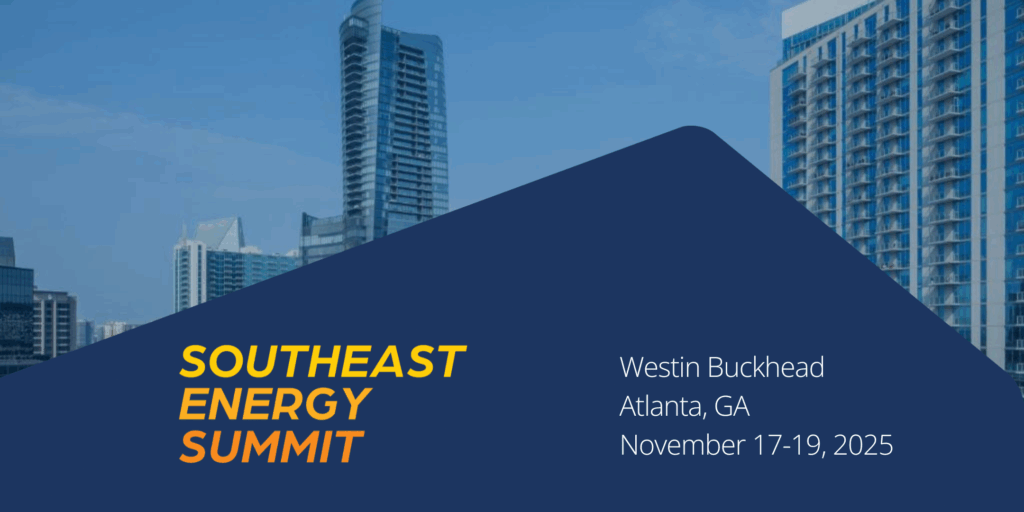
2025 Southeast Energy Summit
📍 November 17–19, Atlanta, GA
The Southeast Energy Summit returns this fall, bringing together energy leaders, innovators, and changemakers from across the region. Hosted at the Westin Buckhead in Atlanta, this three-day event is your chance to dive into dynamic discussions, celebrate progress in energy efficiency, and make meaningful connections through curated networking events.
Registration is officially open! Lock in your spot now and enjoy discounted early bird rates—available for a limited time.
Want to be a sponsor or exhibitor? Reach out to info@seealliance.org to get involved.
Mark your calendar, and we’ll see you in November!
Click the link below to learn more about the event.
Thank you for reading!
Have questions or want to collaborate with SEEA staff? Want something shared in our next Buildings Blueprint?
Subscribe to the building’s newsletter here.
July Map of the Month
By William D. Bryan, Ph.D.
The federal Low Income Home Energy Assistance Program (LIHEAP) is a lifeline for millions of Americans. Since 1981, this program has helped low-income households keep their lights on and remain safe during extreme weather through bill assistance, crisis intervention, and funding for weatherization improvements.
Despite its demonstrated impact, LIHEAP faces an uncertain future. The White House proposed eliminating the program in its FY26 budget recommendations, and the entire staff at the U.S. Department of Health and Human Services (HHS) responsible for administering LIHEAP was terminated this April. Ending this program will leave millions of households with no stopgap for unaffordable energy and extreme weather, with ripple effects on states, utilities, and ratepayers in the South.
Using data from the LIHEAP Data Warehouse, this month’s visualization explores the significant impact this program has had on the Southeast. Over the past decade, LIHEAP has supported 10.3 million households in the Southeast, and more than 52 million households nationally. In FY24, this made up nearly 15% of households at or below 150% of the federal poverty level across the region. Almost three-quarters of Southern households served (7.75 million) include at least one resident in a vulnerable age group (60+ or under 5 years old) or with a disability.
Though benefits vary by state, LIHEAP provides emergency assistance for households who struggle to afford their energy bills and may face the disconnection of essential energy services – an event that can contribute to heightened health and safety risks, potential housing displacement, and strained household finances. Since 2016, this assistance has prevented or resolved disconnections for 4.6 million households in the South. As this month’s chart shows, Kentucky and North Carolina lead the region with the highest number of households who were able to avoid disconnection or have their service restored thanks to LIHEAP, followed by Alabama. In Kentucky alone, 1.25 million households have avoided disconnection entirely or been reconnected thanks to LIHEAP – more than in any other state in the nation.
Although LIHEAP is primarily known as a bill assistance program, states can allocate a portion of their funding to support weatherization efforts that permanently reduce energy bills. Through the U.S. Department of Energy’s Weatherization Assistance Program (WAP), LIHEAP has funded the weatherization of 220,127 households in the South since 2001, allowing WAP providers extend their reach and serve more households with energy- and cost-saving home improvements. As the chart below shows, five states – Arkansas, Kentucky, South Carolina, Virginia, and West Virginia – have reached their maximum contribution to weatherization, though they can exceed this 15% allocation through a waiver.
The elimination of LIHEAP would remove a vital backstop for financially insecure households, making it harder for millions of people across the Southeast to catch up on overdue energy bills. In FY24, the average energy burden for LIHEAP recipients in the South was 14.5% of household income, well over the 12.4% national average and nearly two-and-a-half times the 6% threshold considered affordable. A 2018 survey conducted by the National Energy Assistance Directors Association (NEADA) underscored the difficult tradeoffs that LIHEAP recipients often have to make to maintain access to energy: 36% went without food for at least one day to save money for utility bills, 41% skipped medical or dental care, 30% resorted to heating their home with an oven or stove, and a quarter kept their homes at unhealthy or unsafe temperatures. Trade-offs like this were not always enough to make bills affordable, and 13% of LIHEAP recipients took out high-interest payday loans to cover utility bills, deepening their financial precarity.
Besides the direct impacts on households receiving assistance and efficiency investment, the elimination of LIHEAP is likely to increase energy costs for all ratepayers. When customers fall behind on their bills and face disconnection, utilities incur “bad debt” costs that are often passed along to consumers through higher energy rates. In 2024, utilities nationwide faced $17.4 billion in bad debt from customers with substantial arrearages or disconnections due to nonpayment, an 8.4% increase from the previous year, which NEADA attributes to significant cuts in LIHEAP funding. Although this was less than during the peak of the COVID-19 pandemic, bad debt remains a challenge amid historic demand levels that are putting upward pressure on rates. Without access to LIHEAP, the 1.2 million households in the Southeast who successfully resolved utility disconnections last year will have no recourse, likely increasing bad debt and requiring utilities to invest in energy efficiency, bill management, and payment assistance programs to keep arrearages under control.
LIHEAP is a critical safeguard serving a large population in the Southeast while helping to mitigate rate increases caused by utility bad debt. In FY24, LIHEAP assisted 1.1 million households in the region – outpacing all other federal, state, local, and utility assistance and weatherization programs. Beyond providing immediate bill assistance, LIHEAP also expands access to weatherization services that permanently reduce energy consumption, offering a long-term path to lower energy bills. The elimination of LIHEAP threatens to put energy affordability further out of reach for millions of households across the Southeast, driving up costs for all ratepayers, exacerbating financial hardship, and increasing risks of utility disconnections at a time when rising energy costs and extreme weather already strain household budgets.
*Stay tuned for SEEA’s forthcoming policy brief on LIHEAP for a deeper dive into the program’s impact on the Southeast. Please reach out to Will Bryan, Director of Research, for more information.
Virginia is for Rail Lovers: A Record Year for Rail Travel
By Elizabeth Willis, SEEA Buildings Research Associate
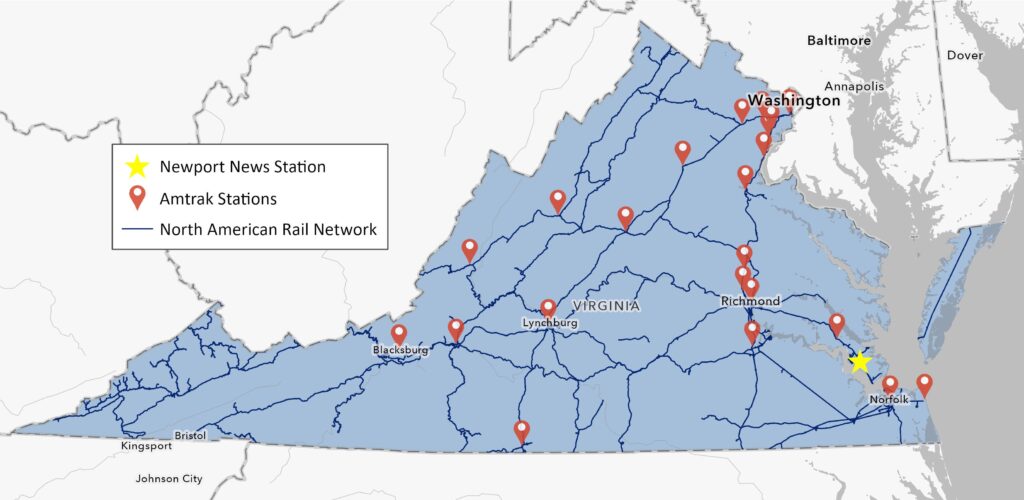
Map: Southeast Energy Efficiency Alliance. Source: U.S. Department of Transportation.
From the mountains to the coast, Virginia’s railways are riding a wave of renewed energy and expanding ridership. 2024 was an exceptional year for passenger rail in Virginia. With a record-breaking 1.39 million riders on Amtrak Virginia service, the Commonwealth is proving that convenient, comfortable, and sustainable transportation is not only possible, but thriving. This milestone marks a 4.8% increase over 2023 and an impressive 45% jump from pre-pandemic ridership levels in 2019. It’s safe to say: Virginia is for rail lovers.
Since launching state-supported service in 2009 with just one roundtrip between Washington, D.C. and Lynchburg, Virginia’s rail network has increased into eight daily roundtrips serving 17 stations across four key corridors: Roanoke, Norfolk, Newport News, and Richmond. Riders can enjoy seamless, one-seat rides, without having to transfer trains from Virginia to major East Coast destinations like New York, Boston, and Philadelphia thanks to the integration with Amtrak’s Northeast Corridor.
But the growth isn’t just about numbers, it’s about the people choosing trains over traffic. “Our 2024 record ridership represents more than just holiday travel,” said DJ Stadtler, Executive Director of the Virginia Passenger Rail Authority (VPRA), “It is indicative of Virginians using passenger rail as a convenient part of their travel plans.” Taking the train is often more affordable, less stressful, and much easier than driving hundreds of miles. A trip from D.C. to Norfolk, for instance, saves travelers nearly 400 miles behind the wheel.
This commitment to rail is backed by meaningful infrastructure investments. One of the most exciting developments this year was the opening of the Newport News Transportation Center in August 2024. This modern multimodal hub connects passengers to Amtrak, local buses, airport shuttles, and taxis, serving as a gateway to both regional and long-distance destinations. Features like ADA-compliant platforms, real-time train information, a spacious waiting area, and Amtrak ticketing staff onsite will enhance the rider’s experience and make train travel more accessible for everyone.
The Newport News project is a shining example of what can be accomplished when public agencies and communities work together. Amtrak, VPRA, CSX, FRA, DRPT, VDOT, and the City of Newport News collaborated to bring this state-of-the-art station to life. As Mayor Phillip Jones put it, “This is a landmark achievement for our city and a testament to the power of collaboration.” Additionally, Christiansburg is getting an Amtrak extension, as Governor Glenn Youngkin recently broke ground on the New River Valley Project.
Beyond the numbers, what makes this success story so exciting is what it represents: a shift in how Virginians move. As the state continues to grow and evolve, passenger rail is helping close transportation gaps, especially in areas without direct interstate access, and giving travelers a smart, reliable alternative to car travel.
With strong ridership, expanded service, and a growing network of modern transportation hubs, Virginia is proving that the future of travel is not only on track, it’s right on time.
This work was made possible through our collaboration with TEEM Virginia. TEEM, which stands for Towards Equitable Electric Mobility, is a national Community of Practice, a peer-to-peer network of organizations advancing equitable mobility across the U.S. In Virginia, our cohort includes the NAACP, Generation180, Virginia Organizing, Ceres, and the Southeast Energy Efficiency Alliance, working together to create more just and inclusive transportation solutions.


